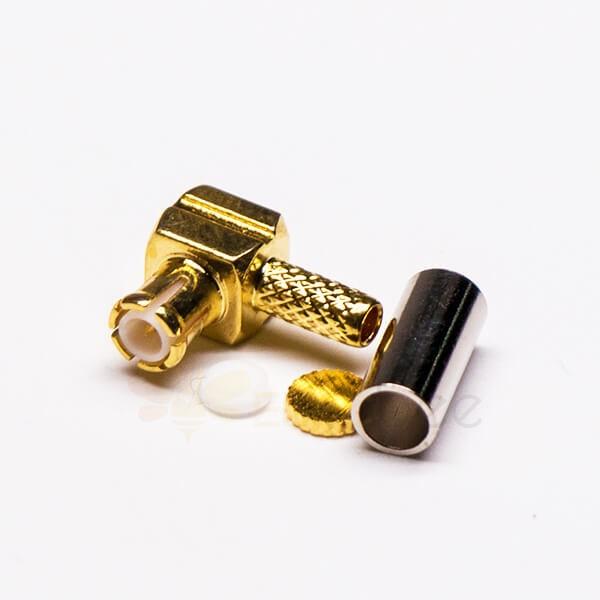Connectors are essential components in electronic devices that allow for the transfer of signals and power between different components. However, with the vast range of connectors available in the market, it can be challenging to determine which type is most suitable for a particular application. Two popular connector types are SMA and MCX connectors. While both connectors share some similarities, they are distinct in several ways. In this article, we will delve into the differences between SMA and MCX connectors and explore their unique characteristics.
Introduction to SMA and MCX Connectors
SMA and MCX are both RF connectors used for connecting coaxial cables in high-frequency applications. RF connectors are commonly used in telecommunications, military, aerospace, and other industries that require reliable transmission of signals in high-frequency ranges. The primary function of RF connectors is to provide a secure and low-loss connection between different components in a system.
SMA Connectors
SMA stands for SubMiniature version A, and it is a threaded RF connector that was first introduced in the 1960s. SMA connectors are commonly used in applications that require frequencies up to 18 GHz. They are popular in applications such as radio, microwave, and satellite communications, as well as in test and measurement equipment. SMA connectors feature a threaded interface that ensures a secure and reliable connection, making them ideal for applications that require frequent mating and demating.
MCX Connectors
MCX stands for Micro Coaxial eXtended, and it is a smaller version of the SMB connector. MCX connectors are commonly used in applications that require frequencies up to 6 GHz. They are popular in applications such as GPS, WLAN, and cellular communications, as well as in consumer electronics such as laptops and smartphones. MCX connectors feature a snap-on interface, which allows for quick and easy connections and disconnections.

Differences Between SMA and MCX Connectors
Frequency Range
One of the primary differences between SMA and MCX connectors is their frequency range. SMA connectors are designed for use in applications that require frequencies up to 18 GHz, while MCX connectors are designed for use in applications that require frequencies up to 6 GHz. Therefore, if you require a connector for a high-frequency application, SMA connectors may be the better option.
Size
Another significant difference between SMA and MCX connectors is their size. SMA connectors are larger and heavier than MCX connectors, which makes them more suitable for applications that require ruggedness and durability. On the other hand, MCX connectors are smaller and more compact, which makes them ideal for applications where space is limited.
Connection Method
SMA connectors use a threaded interface, which provides a secure and reliable connection. However, this interface requires more effort and time to connect and disconnect. MCX connectors use a snap-on interface, which allows for quick and easy connections and disconnections. This feature makes MCX connectors more suitable for applications where frequent mating and demating are required.
Impedance
SMA and MCX connectors have different impedance values. SMA connectors have a characteristic impedance of 50 ohms, while MCX connectors have a characteristic impedance of 75 ohms. This difference in impedance can affect signal transmission and may influence the choice of connector for a particular application.
Compatibility
SMA and MCX connectors are not interchangeable due to their different sizes and impedance values. Therefore, it is essential to select the appropriate connector for a particular application to ensure compatibility and optimal performance.
Advantages and Disadvantages of SMA and MCX Connectors
SMA Connectors
Advantages:
- Reliable and secure threaded interface
- Can handle high frequencies up to 18 GHz
- Durable and rugged design
Disadvantages:
- Larger and heavier than MCX connectors
- More challenging to connect and disconnect
MCX Connectors
Advantages:
- Smaller and more compact than SMA connectors
- Quick and easy snap-on interface
- Suitable for applications with limited space
Disadvantages:
- Limited frequency range up to 6 GHz
- Less rugged and durable than SMA connectors
Choosing the Right Connector
Selecting the appropriate connector for a particular application requires careful consideration of the application's requirements. Factors such as frequency range, size, connection method, impedance, and compatibility should be evaluated to determine the most suitable connector.
Conclusion
SMA and MCX connectors are both popular RF connectors used in high-frequency applications. While bothconnectors share some similarities, they are distinct in several ways. SMA connectors are larger and heavier, more rugged and durable, and can handle higher frequencies up to 18 GHz. MCX connectors, on the other hand, are smaller and more compact, have a limited frequency range up to 6 GHz, but have a quick and easy snap-on interface that allows for quick connections and disconnections.
When choosing between SMA and MCX connectors, it is crucial to consider the specific requirements of the application. Factors such as frequency range, size, connection method, impedance, and compatibility should be carefully evaluated to determine the most suitable connector for the application.
In summary, understanding the differences between SMA and MCX connectors can help in selecting the right connector for a particular application. Whether it's for high-frequency applications that require ruggedness and durability or for applications with limited space, there is a connector available that can meet the specific needs of the application.

